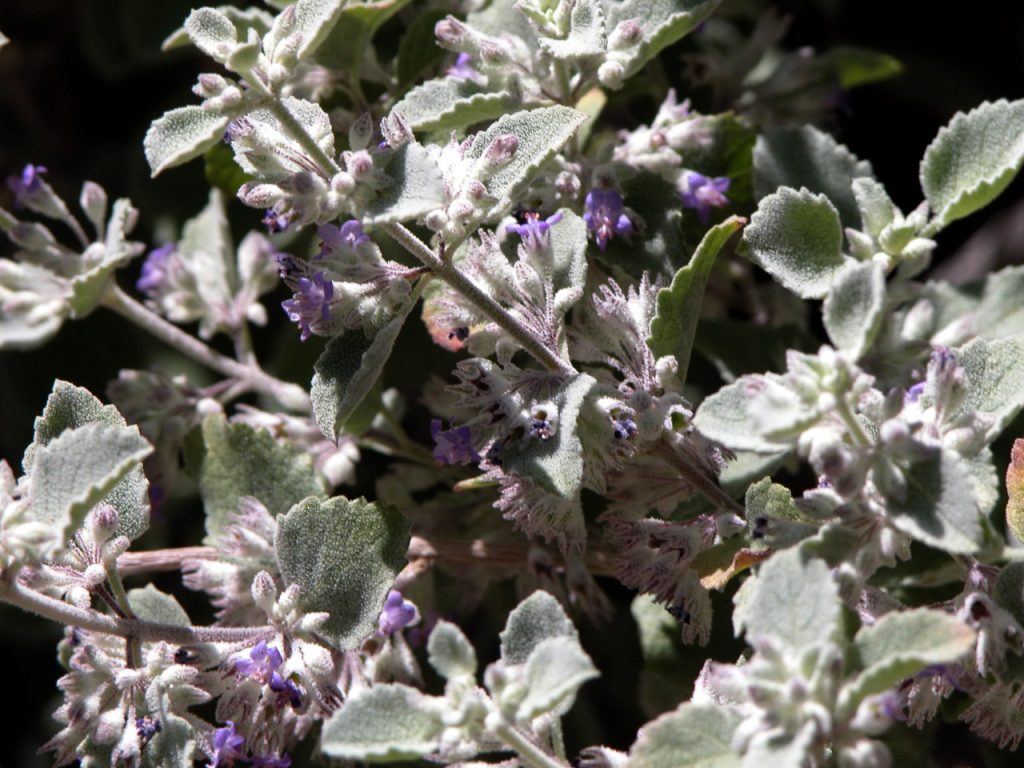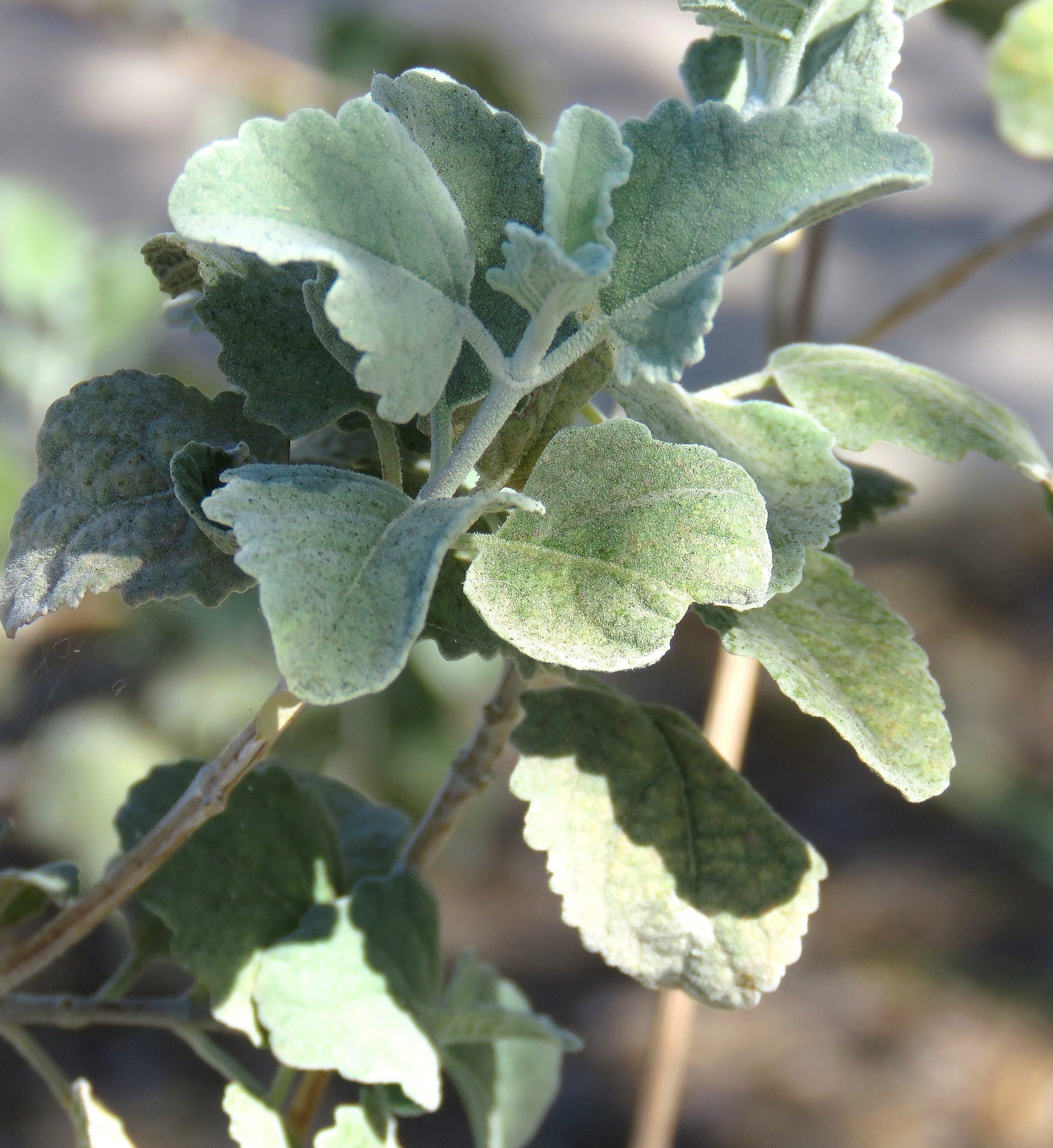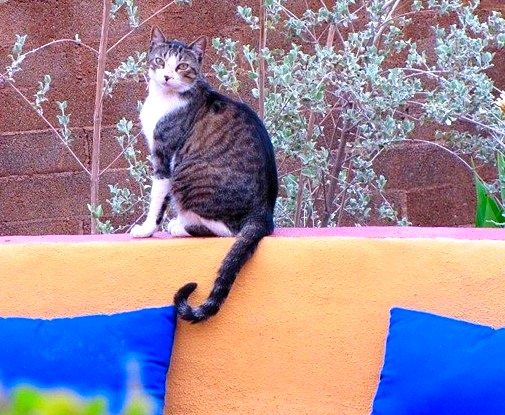Description The gray leaves of Desert lavender, Hyptis emoryi, are covered with fine hairs and are soft to the touch. A pleasant lavender scent is released following rains or if you brush against the foliage. Individual leaves are 1-inch-long by ¾ inch wide, broader at the base than the tip. The edges have rounded teeth. The branches grow upright to form an evergreen shrub to 10 feet high and 8 feet wide. Spikes of silvery-blue flowers develop at the ends of the branches anytime throughout the year, but they appear most heavily in spring.
Native Distribution Desert Lavender occurs to 3,000 feet elevation, in southern California, Nevada, Arizona, New Mexico, and Baja California and Sonora, Mexico. It grows on dry, rocky slopes, along washes, and in canyons.

Culture Full sun encourages dense growth; in partial shade the foliage will be sparser. Well-drained soil is recommended. Desert-lavender is drought tolerant once established, though extended drought will cause some leaf drop. It will benefit from infrequent deep soakings during the warm season, until late summer, when water should be withheld to harden the plant for winter. Temperatures in the low 20s F will cause foliage damage. Even though the plant may freeze to the ground in severe winters, it should resprout and will probably grow back bushier than before. The natural growth form of Desert Lavender is fairly compact, so pruning is optional. Fall pruning, which would stimulate frost-sensitive new growth, should be avoided.

Landscape Use Desert Lavender’s silvery foliage would look attractive in most desert landscapes, either combined with similarly colored plants for a restful monochromatic effect, or contrasted with green-foliaged plants. You could take advantage of the upright form by making an informal hedge or privacy screen of several plants. The fragrant foliage can best be appreciated near a patio or in an entryway. Bees frequent the flowers, and birds often nest among the branches.
Did you know that up to 70% of water use is outdoors? That’s why we love desert plants and feature them each month. You can learn more about Desert Lavender and other plants on our Arizona Low-Water-Use Plants page. Visit our page on Choosing and Planting Low Water-Use Plants for tips on plant selection and how to plant properly.
Also, be sure to read through all of our featured Plant of the Month blogs!
From time to time, Water – Use It Wisely features guest bloggers who write about topics related to water and water conservation. Judy Mielke is a horticulturist, Landscape Architect and the author of one of Water – Use It Wisely’s favorite books. You can find plant descriptions like this and many more in her book Native Plants for Southwestern Landscapes.


